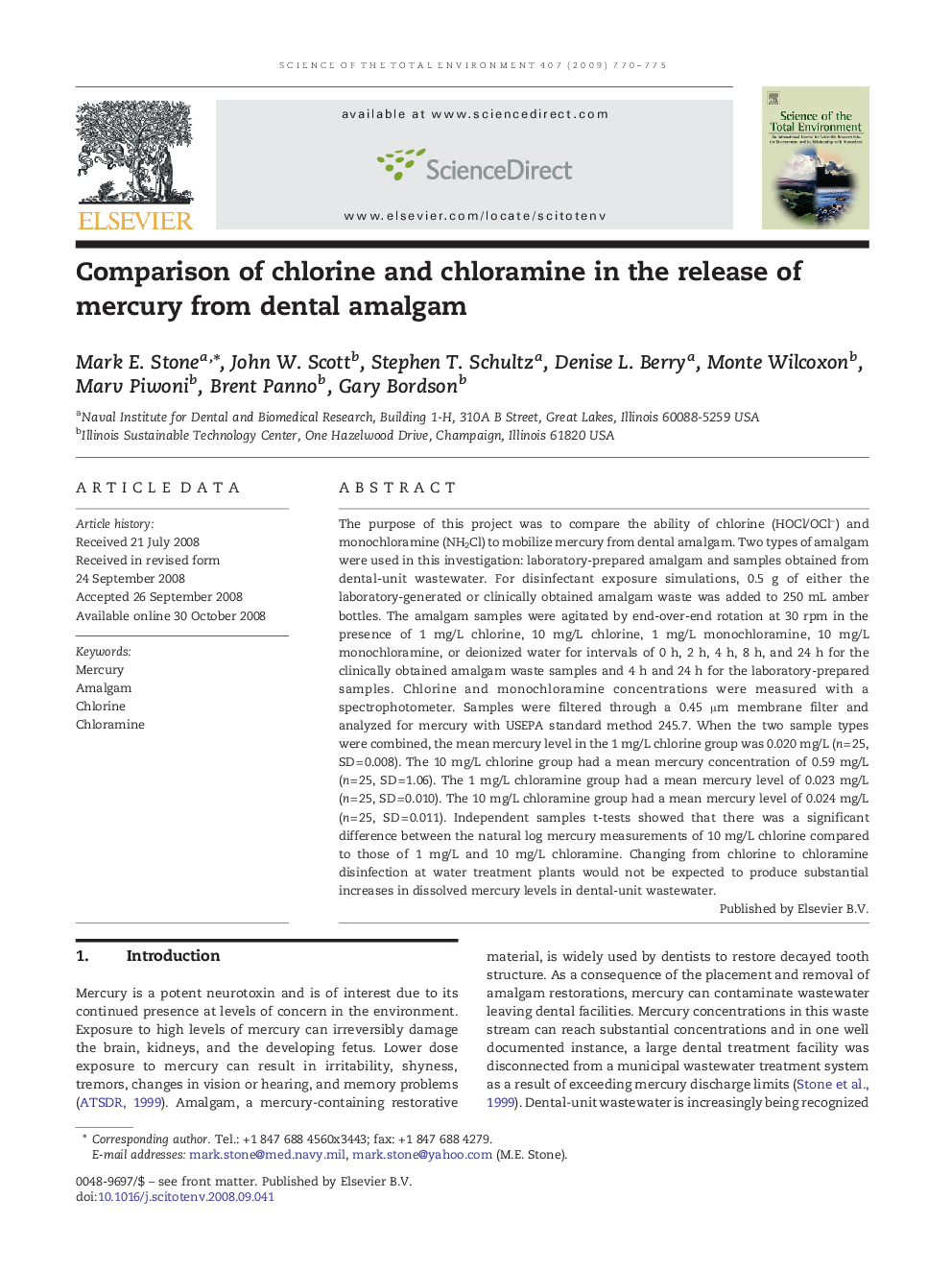| Article ID | Journal | Published Year | Pages | File Type |
|---|---|---|---|---|
| 4431889 | Science of The Total Environment | 2009 | 6 Pages |
The purpose of this project was to compare the ability of chlorine (HOCl/OCl−) and monochloramine (NH2Cl) to mobilize mercury from dental amalgam. Two types of amalgam were used in this investigation: laboratory-prepared amalgam and samples obtained from dental-unit wastewater. For disinfectant exposure simulations, 0.5 g of either the laboratory-generated or clinically obtained amalgam waste was added to 250 mL amber bottles. The amalgam samples were agitated by end-over-end rotation at 30 rpm in the presence of 1 mg/L chlorine, 10 mg/L chlorine, 1 mg/L monochloramine, 10 mg/L monochloramine, or deionized water for intervals of 0 h, 2 h, 4 h, 8 h, and 24 h for the clinically obtained amalgam waste samples and 4 h and 24 h for the laboratory-prepared samples. Chlorine and monochloramine concentrations were measured with a spectrophotometer. Samples were filtered through a 0.45 µm membrane filter and analyzed for mercury with USEPA standard method 245.7. When the two sample types were combined, the mean mercury level in the 1 mg/L chlorine group was 0.020 mg/L (n = 25, SD = 0.008). The 10 mg/L chlorine group had a mean mercury concentration of 0.59 mg/L (n = 25, SD = 1.06). The 1 mg/L chloramine group had a mean mercury level of 0.023 mg/L (n = 25, SD = 0.010). The 10 mg/L chloramine group had a mean mercury level of 0.024 mg/L (n = 25, SD = 0.011). Independent samples t-tests showed that there was a significant difference between the natural log mercury measurements of 10 mg/L chlorine compared to those of 1 mg/L and 10 mg/L chloramine. Changing from chlorine to chloramine disinfection at water treatment plants would not be expected to produce substantial increases in dissolved mercury levels in dental-unit wastewater.
